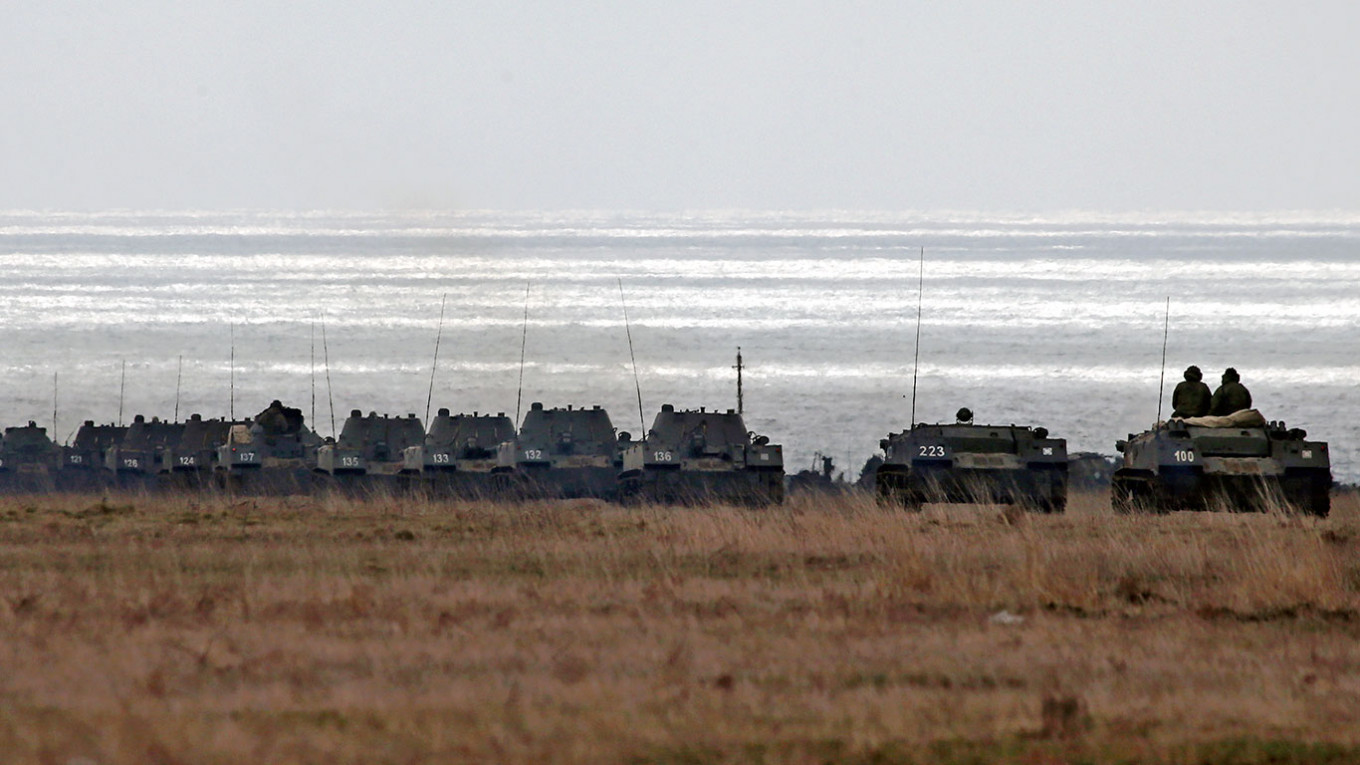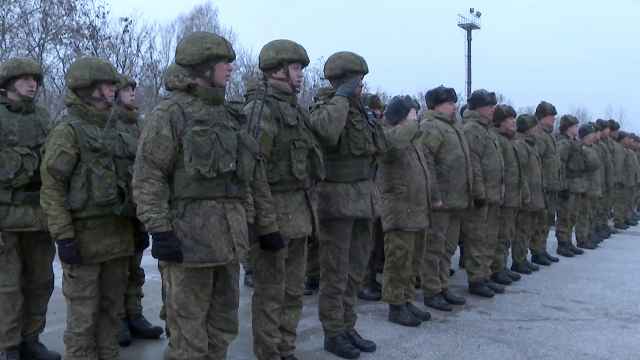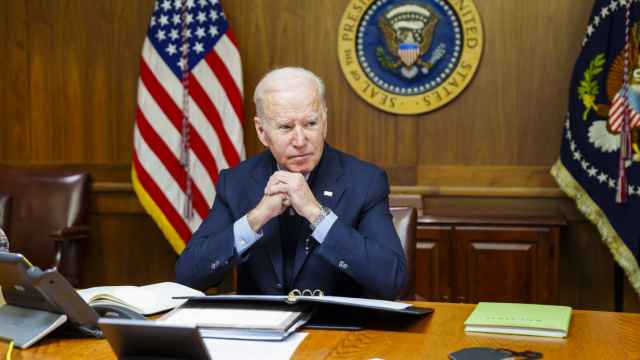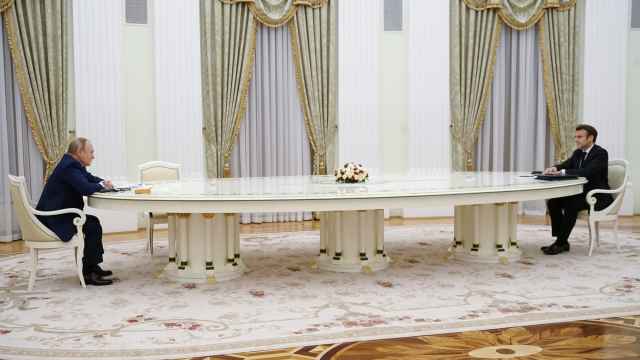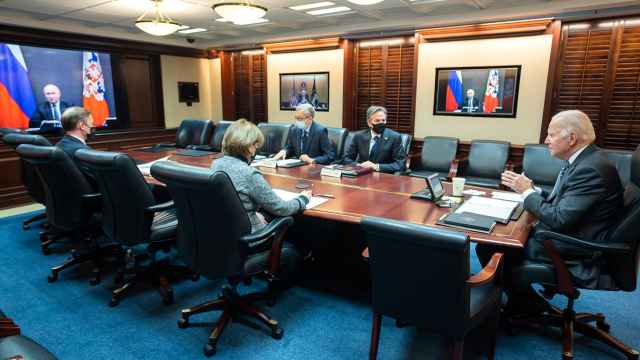Growing tensions between Russia and Ukraine are unlikely to lead to a full-blown invasion because of the enormous military, economic and human costs such action would provoke, experts told The Moscow Times on Monday.
Russia has been mustering military units on its border with Ukraine this month, in moves the EU on Friday called "rather worrying," as the long-running standoff between the two becomes more unpredictable.
But although the buildup comes amid unusually high tensions between Russia and the West, exacerbated by suspicions of Moscow’s involvement in Belarus’s migration crisis, U.S. navy exercises in the Black Sea, and Europe’s gas supply crisis, analysts in Russia and abroad are cautious to draw conclusions about an imminent Russian attack.
“To be quite honest, I don’t see any grounds to expect an invasion,” said Andrei Kortunov, head of the Russian International Affairs Council (RIAC), a Kremlin-aligned think tank.
"I don’t know what it would achieve. The losses would be huge, and the potential gains very limited."
For several weeks now, a steady trickle of information has appeared to suggest a return to hostilities in a conflict that has been mostly dormant in the seven years since Russia annexed the Crimean peninsula and reportedly sponsored a separatist uprising in Ukraine’s Russian-speaking east.
Footage purporting to show Russian military hardware being moved towards Ukraine has been widely shared on social media.
Meanwhile, satellite imagery of military deployments along the western frontier with Ukraine and Belarus — where separate armed exercises have been seen as a statement of political support for embattled Belarusian President Alexander Lukashenko — appears to show a Russian army getting ready to move.
According to Ukrainian government estimates, 114,000 Russian military personnel are now deployed in close proximity to Ukraine’s northern, southern and eastern borders.
In many ways, the development resembles an earlier buildup of Russian forces in March and April this year, which sparked speculation of an imminent assault, before the troops were suddenly pulled back.
Against this backdrop, Bloomberg has reported that U.S. officials have briefed European counterparts on a possible Russian assault on Ukraine.
Rob Lee, a Eurasia fellow at U.S. think tank the Foreign Policy Research Institute said he doubts Russian President Vladimir Putin wants to conduct a large-scale invasion of Ukraine
"He wants to use force, or the threat of force, to get Ukraine and NATO to make concessions."
The recent increase in tensions comes on the back of years of souring ties between Moscow and Kiev.
Moscow had once hoped that Ukrainian President Volodymyr Zelenskiy, a native Russian-speaker from the country’s east, might be amenable to making a deal to end the war that began when Russia-backed separatists seized Ukraine’s eastern Donbass provinces.
Instead, Zelenskiy has presided over a steady worsening of relations with Russia since his election in 2019.
Pressure on pro-Russian media and politicians in Ukraine, including treason charges against Viktor Medvedchuk, a Ukrainian lawmaker and longtime personal friend of Vladimir Putin, have infected the two sides’ relations with more bitterness than usual.
The Minsk Protocol — a 2015 deal on a potential outline to end the war — has been mostly forgotten, with ceasefires broken and low-level fighting continuing.
NATO concerns
Meanwhile, deepening military cooperation with NATO countries, including the purchase of Turkish Bayraktar military drones earlier this year, has brought things to a head.
For Russia, which has long opposed Ukraine’s entry into the U.S.-led military pact, a recent tranche of Western arms supplies and weapons deals for Kiev has raised the prospect of the country moving decisively into the NATO camp.
Though formal NATO membership for Ukraine is not an immediate prospect, the Kremlin warned in September that expanding the alliance’s presence in Ukraine would still constitute a crossing of Russia’s so-called "red lines."
In particular, the issue of drones — which were used to shell Donbass separatist positions for the first time last month — is an emotive one.
In last year’s war in the separatist Nagorno-Karabakh enclave, Azerbaijan used Bayraktar drones purchased from Turkey to defeat Armenian forces and achieve a decisive victory in what had been one of the former Soviet Union’s longest running frozen conflicts.
Some in Moscow worry that Ukraine may now be looking to build up its arsenals in preparation for a future decisive offensive in the Donbass.
"Zelenskiy might try to become a Ukrainian Aliev," said RIAC’s Kortunov, referring to the Azerbaijani president who led his country to victory in Nagorno-Karabakh.
Frozen conflict
However, for many in Moscow, the fear is less of a concrete Ukrainian plan to resolve the Donbass issue than of a broader sense that the seven-year-old frozen conflict is becoming increasingly unpredictable.
With Zelenskiy’s approval ratings falling to record lows, some imagine that he might attempt to rally his base by fulfilling pre-election promises to resolve the Donbass conflict ahead of presidential polls scheduled for 2024.
Moreover, with a fresh summit between the Russian and American presidents in the works, the Kremlin reportedly worries that Ukraine, if undeterred, may scupper the modest thaw in U.S.-Russia relations since June’s Biden-Putin summit in Geneva.
"The fear in Moscow is that Ukrainian hawks might opt for further provocations to try to pull Russia into a full-scale confrontation," said Tatiana Stanovaya, founder of R.Politik, a political analysis firm.
In any case, experts stress that the 114,000 Russian personnel allegedly on the border would not be sufficient to defeat Ukraine’s armed forces, estimated at around 255,000.
With Ukraine having already resisted a Russian invasion in 2014 — when its army was much weaker — the costs of invading and occupying the country would likely far exceed the military units currently rallied on the Russian side of the border.
"We shouldn’t overestimate the scale of what’s going on at the border," said the RIAC’s Kortunov.
"There aren’t enough forces there right now to undertake a serious operation. Right now, this looks like deterrence more than anything."
A Message from The Moscow Times:
Dear readers,
We are facing unprecedented challenges. Russia's Prosecutor General's Office has designated The Moscow Times as an "undesirable" organization, criminalizing our work and putting our staff at risk of prosecution. This follows our earlier unjust labeling as a "foreign agent."
These actions are direct attempts to silence independent journalism in Russia. The authorities claim our work "discredits the decisions of the Russian leadership." We see things differently: we strive to provide accurate, unbiased reporting on Russia.
We, the journalists of The Moscow Times, refuse to be silenced. But to continue our work, we need your help.
Your support, no matter how small, makes a world of difference. If you can, please support us monthly starting from just $2. It's quick to set up, and every contribution makes a significant impact.
By supporting The Moscow Times, you're defending open, independent journalism in the face of repression. Thank you for standing with us.
Remind me later.



